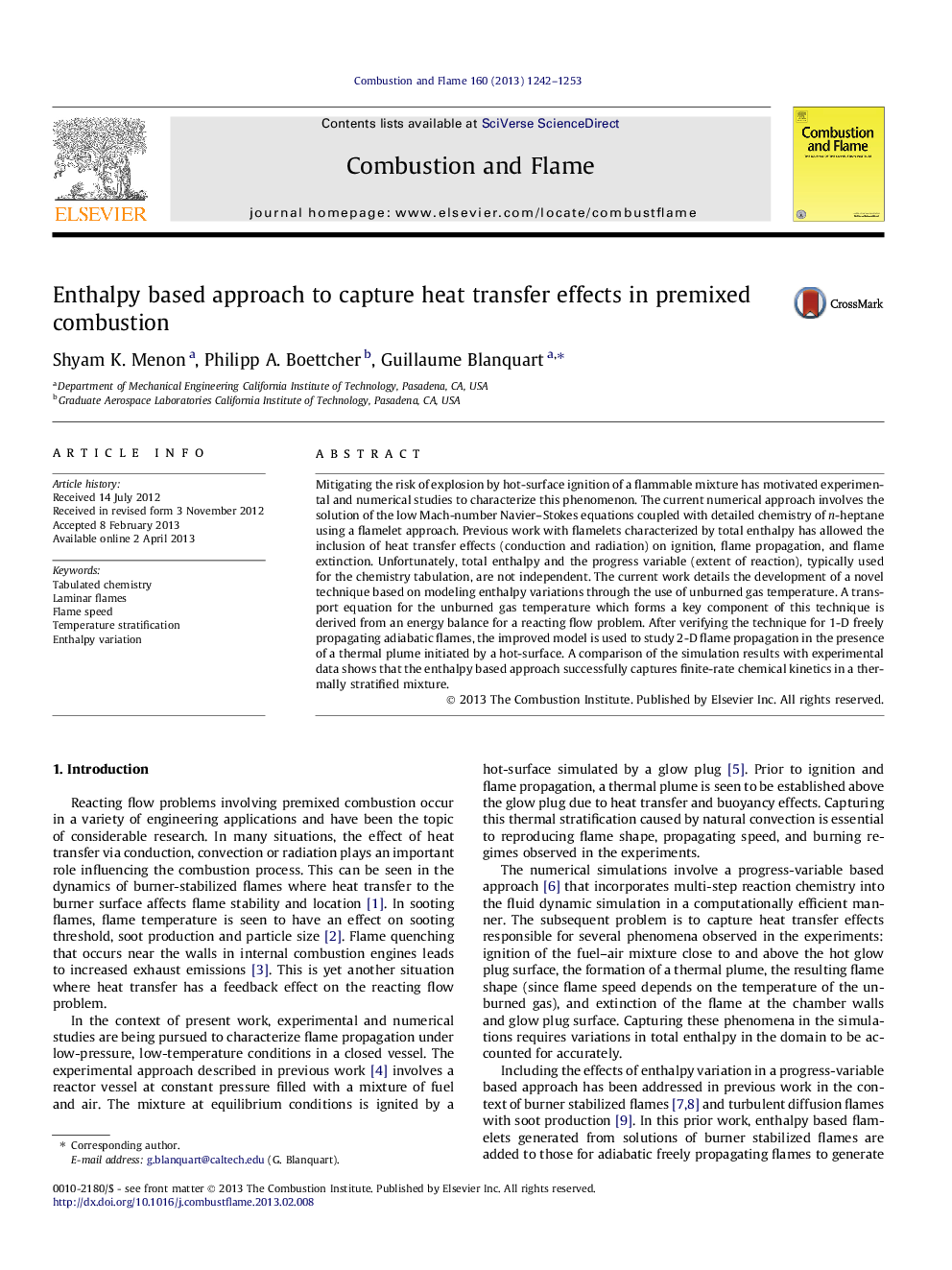| Article ID | Journal | Published Year | Pages | File Type |
|---|---|---|---|---|
| 169107 | Combustion and Flame | 2013 | 12 Pages |
Mitigating the risk of explosion by hot-surface ignition of a flammable mixture has motivated experimental and numerical studies to characterize this phenomenon. The current numerical approach involves the solution of the low Mach-number Navier–Stokes equations coupled with detailed chemistry of n-heptane using a flamelet approach. Previous work with flamelets characterized by total enthalpy has allowed the inclusion of heat transfer effects (conduction and radiation) on ignition, flame propagation, and flame extinction. Unfortunately, total enthalpy and the progress variable (extent of reaction), typically used for the chemistry tabulation, are not independent. The current work details the development of a novel technique based on modeling enthalpy variations through the use of unburned gas temperature. A transport equation for the unburned gas temperature which forms a key component of this technique is derived from an energy balance for a reacting flow problem. After verifying the technique for 1-D freely propagating adiabatic flames, the improved model is used to study 2-D flame propagation in the presence of a thermal plume initiated by a hot-surface. A comparison of the simulation results with experimental data shows that the enthalpy based approach successfully captures finite-rate chemical kinetics in a thermally stratified mixture.
